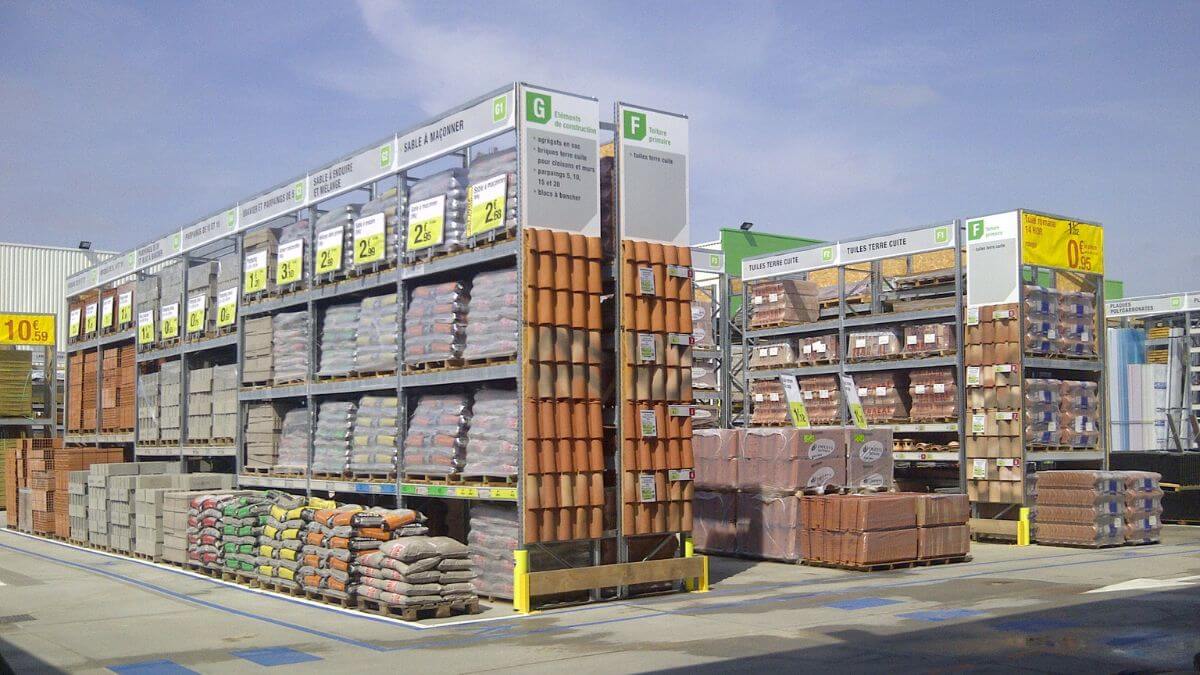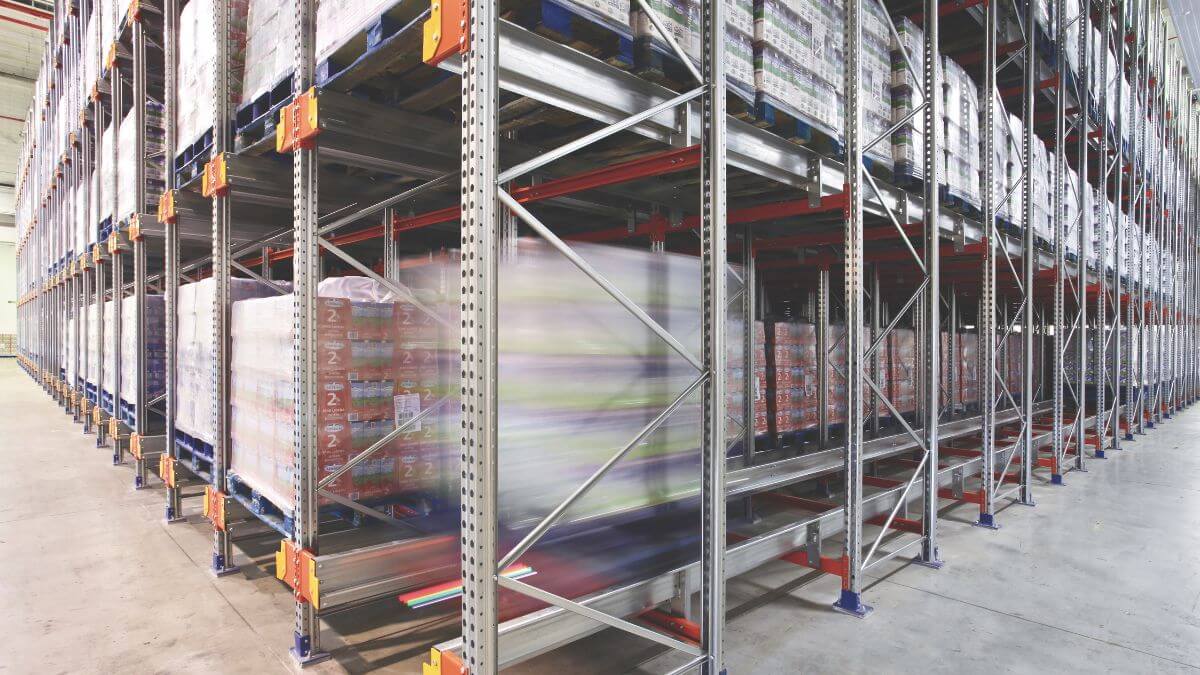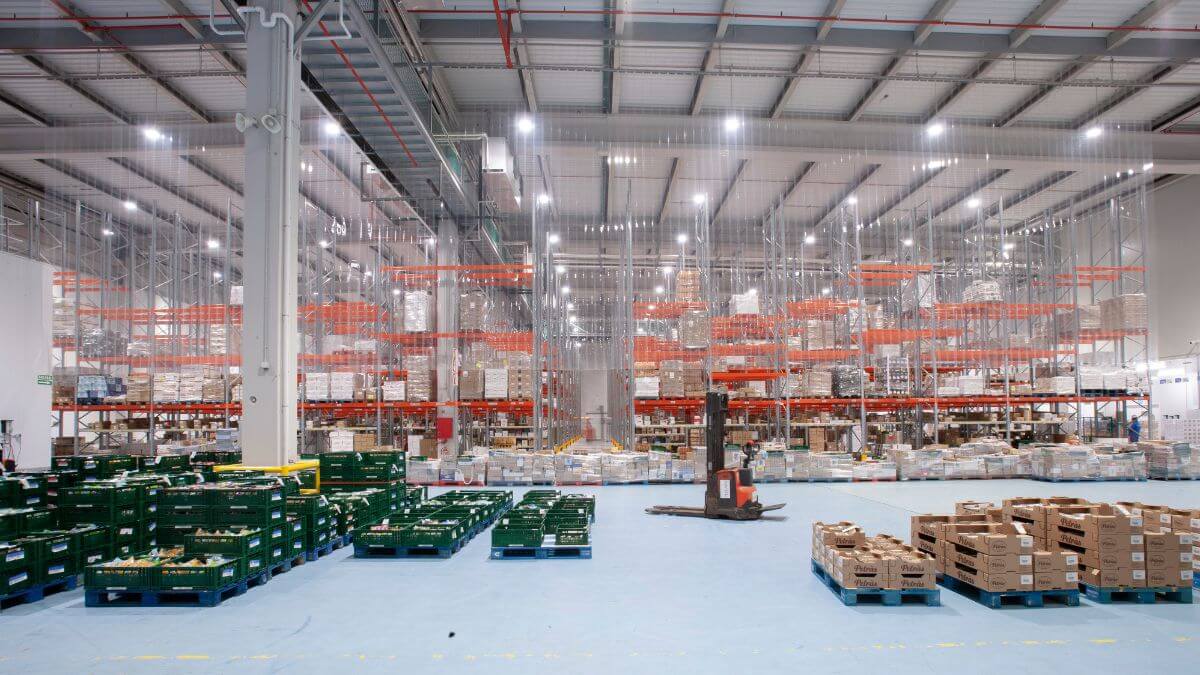The purpose of warehouses is to store goods along the supply chain, but there are different types of warehouses that perform different functions and logistics activities, with their own needs and objectives.
They can be classified according to many criteria, but these are the most common:
By their enclosure
Indoor or covered warehouses
Warehouses protected by a roofed structure to protect raw materials from the elements. The may contain other areas for materials that need other temperature or light conditions, such as cold rooms.
Outdoor or open-air warehouses
Open-air warehouses with no building or roof to protect them, but enclosed by fences. Products stored in them do not need protection, as they do not deteriorate due to different weather conditions. However, racking for outdoor warehouses must be sturdy and specific.

By type of product or goods stored
Finished goods warehouse
This is usually the most common type of warehouse, since it contains products that have already finished their production phase. Its function is to store these products until they are sold to the customer.
Semi-finished goods or work-in-progress warehouse
These warehouses contain products that have not yet finished their production phase or that need some type of additional finish and therefore cannot be sold yet. They are stored for subsequent shipment to whoever is responsible for finishing the product.
Raw material warehouse
As its very name indicates, it stores raw materials that are subsequently used to manufacture products. These types of warehouses are usually located close to production centres where that product will be created. Often, they are also supply warehouses to keep the production lines of the industry they serve active.
Packaging and containers warehouse
They contain different types of packaging and containers that will protect and wrap the finished products.
Auxiliary materials warehouse
They are similar to raw material warehouses, as they store auxiliary materials that will be used to complete the finished products, but that are really not considered raw materials.
Spare parts warehouse
They store materials that serve as spare parts in case there are any breakdowns or errors during after-sales and the products need to be replaced or repaired.
By degree of automation
Warehouses have different degrees of mechanisation, and can be separated into two groups, conventional and high-density, smart or automated warehouses.
Adjustable pallet racking warehouses
They consist of simple adjustable pallet racking, and are not more than ten metres high. Forklifts are used in these warehouses. The racking is distributed to facilitate their manoeuvre and to support different types of loads on the shelves.
There are different types of conventional warehouses, such as warehouses with drive-in and drive-through racking, which are ideal for storing heavy loads, stacking the racking and the products to make compact use of space. Another example is live pallet racking, which has inclined rollers that allow easier storage. In these warehouses the FIFO storage system is usually implemented.
Automated warehouses
These warehouses are more than ten metres high and are for storing large goods. These products cannot be properly handled by traditional machinery, but rather special, automated equipment must be used. The work carried out by operators is minimal, using instead computer-controlled stacker cranes. There are automated warehouses with stacker cranes for pallets, such as the motorised pallet shuttles (AR Shuttle) which transport the load autonomously, and the miniloads. These machines pass through the aisles collecting and placing goods on the racking. They are systems that increase productivity and optimise the use of warehouse space.

By their logistics function
Central warehouses
They are located very close to production and manufacturing centres, to minimise transport and handling costs. They usually store already finished products and have equipment to handle large loads. They then distribute those products to other regional warehouses.
Regional or distribution warehouses
They are supplied by central warehouses and their location is always close to the end customers, since they supply the goods for a specific geographical area. They contain a set amount of stock to meet the needs of that specific area quickly and simply, in order to provide the best service to the end customer.
Supply or production warehouses
They store raw materials, parts, accessories and any other type of element for products that still require the manufacturing process. They are usually located close to the factories where the goods are created so that they can supply the parts without production interruptions. Sometimes these warehouses are connected to the production plants, maximising transport time saving.
Transit warehouses
When the regional warehouse is located far from the final destination or central warehouse (more than a day’s transport), goods are stored at the transit warehouses, since they are interim storage points. Being transit, the flow of goods is very high and without stock accumulation.
Temporary storage warehouses
Here goods are stored temporarily, normally in cases of peak demand for goods that have occasional or seasonal consumption.
Picking warehouses
The order preparation process is carried out at these facilities. Their objective is to perform different types of picking error-free and as quickly as possible. In order to optimise time, it is necessary to optimise space, which is why these warehouses have storage systems to expedite the order preparation process. The solutions installed could be carton live storage, with direct access to the goods to facilitate the tasks of operators.
Consolidation warehouses
They are used to provide support and help large companies that have a high volume of orders. In order to expedite their orders and minimise errors, the goods are grouped by routes, references, customers, etc.

What should be considered when choosing the right type of warehouse?
Choosing the right type of warehouse is a critical decision that can significantly affect a company’s operating efficiency.
There are several key factors to consider when making this decision.
Nature of the product
The first aspect to consider is the nature of the products to be stored. Are they perishable, hazardous or bulky products? For example, perishable products require temperature-controlled storage, which can involve the need for cold rooms.
Additionally, hazardous chemicals must be stored in specific areas with strict safety measures.
Storage volume
The volume of goods handled also influences the choice of the type of warehouse.
Companies with a high volume of inventory may benefit from automated warehouses or high-bay racking systems. These systems maximise vertical space and optimise product access, which is essential to improve efficiency and reduce costs.
Type of material handling
Considering how products will be handled in the warehouse is critical.
Will forklifts, pallet trucks or automated systems be used? The way in which the products will be moved in the warehouse will determine the design of the space and the type of storage systems necessary.
Warehouse design
The physical design of the warehouse must facilitate an efficient work flow. This includes the location of the reception, storage and shipment areas.
A well-planned design can reduce transfer times and improve productivity. Accessibility to the loading and unloading areas is also an important factor to consider.
Operating costs
Storage-related costs are a crucial factor. This not only includes the cost of the physical infrastructure, but also operating costs, such as staff, maintenance and energy. It is essential to evaluate the total cost and not only the initial costs when choosing the type of warehouse.
Flexibility and scalability
The current business environment is dynamic, and the ability to adapt to changing demand is vital. When choosing a type of warehouse, it is important to consider its flexibility and scalability.
A warehouse that can grow and adapt to future needs can avoid additional costs in the future.
Technology and automation
The incorporation of technology and automated systems in the warehouse can significantly improve efficiency. Automated storage systems can help optimise the available space and flow of goods, as well as help reduce errors and speed up operations.
Safety regulations and standards
Complying with safety regulations and standards is essential. This includes regulations such as storage of hazardous products, ergonomics in load handling and general staff safety.
A well-designed warehouse not only ensures efficiency, but also a safe working environment.
Warehouse location
Warehouse location is also a determining factor. It should be strategically located to facilitate access to suppliers and customers, thus optimising logistics and reducing transport costs.
A good location can make the difference in speed of delivery and customer satisfaction.
Supplier evaluation
Finally, the choice of the storage system supplier is crucial. A trustworthy and experienced supplier, such as AR Racking, can offer custom solutions aligned with your specific business needs.













